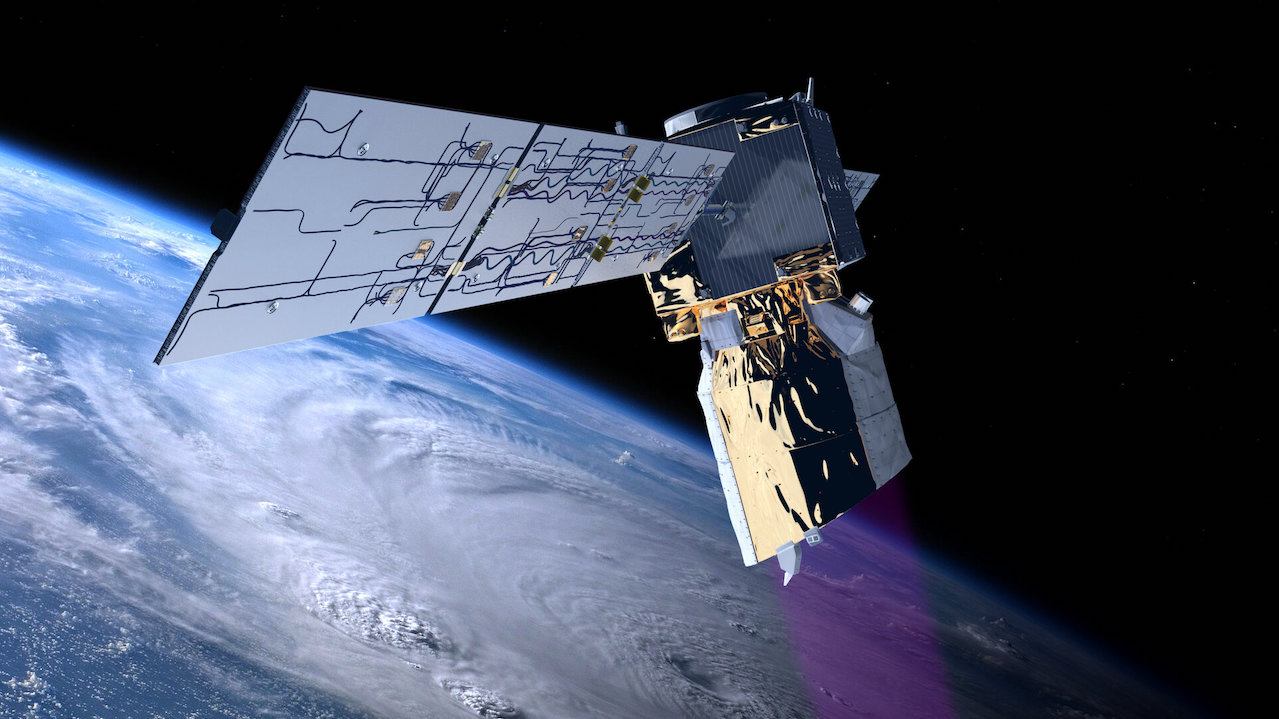Aeolus’ Fiery Demise To Set The Standard For Safe Reentry

ESA’s wind mission, Aeolus, will soon be lowered in orbit leading to its fiery reentry and burn-up through Earth’s atmosphere. ESA’s efforts to ensure a safe return go well beyond international standards and place the Agency in the lead for space safety.
Having exceeded its planned life in orbit, the 1360-kg satellite is running out of fuel. Ensuring that enough fuel remains for a few final manoeuvres, ESA’s spacecraft operators will bring Aeolus back towards our planet’s atmosphere for its inevitable demise.
They will aim the mission towards the ocean, further reducing the very small chance that fragments could cause harm should any reach Earth’s surface.
This is the first assisted reentry of its kind and sets a precedent for a responsible approach to reduce the ever-increasing problem of space debris and uncontrolled reentries.
Why is Aeolus coming home?
Launched in 2018, Aeolus has outlived its planned three-year life in space by more than 18 months. During its mission, its trailblazing wind-mapping laser, which at one stage was thought a nigh-impossible feat of engineering, has significantly improved weather forecasts worldwide.
Aeolus has been hailed as one of the most successful missions ever built and flown by ESA. As an Earth Explorer research mission, it was designed to demonstrate new space technology, but it became one of the highest impact-per-observation weather satellites, and its laser is still performing as well as ever.
However, Aeolus’ fuel is now almost depleted and orbiting low, at an altitude of just 320 km, means it is already being caught up by Earth’s wispy atmosphere.
Speeding up Aeolus’ return is the Sun.
Solar flares and coronal mass ejections release matter and radiation, and when this washes past Earth, it increases the density of Earth’s atmosphere. Intense solar activity in recent months means that the satellite has been using even more fuel to remain in orbit. For Aeolus, it’s been like running against the wind.
This is why, after five years of spectacular science, ESA’s wind mission ended operations on 30 April 2023.
Making use of this phase, scientists have put its instrument into a special mode to perform end-of-life activities that will help to prepare the Aeolus-2 follow-on mission, which like a phoenix will emerge from the ashes of its pathfinding predecessor.
Aeolus’ final breaths
Over the next few months, Aeolus will descend naturally from its current altitude of 320 km to 280 km. At this point, spacecraft operators at ESA’s mission control centre, ESOC, in Darmstadt, Germany, will gradually lower it to 150 km above Earth’s surface. The satellite will burn up as it descends to around 80 km.
As populated regions make up a relatively small percentage of Earth’s surface, the chance of a re-entry causing any harm is exceptionally low.
The final date depends on how solar activity speeds up the process, but Aeolus is expected to be no more before the end of August.
Aeolus engineers and industry partners have carefully worked out how to best position Aeolus in Earth’s atmosphere to target open ocean waters upon reentry, hugely reducing the amount of land over which pieces fragments could fall.
ESA’s Aeolus Mission Manager, Tommaso Parrinello, said, “The exact details on the reentry approach and series of manoeuvres and operations, as well as a more detailed timeline will be made public in mid-June.
“For now, we can anticipate that we are targeting the best ocean corridor to reenter.”
With the assisted reentry of Aeolus, ESA is clearing the way for future missions to continue taking the pulse of our planet. They can only do this if Earth’s orbits aren’t filled with dangerous space debris, and safety is at the forefront of end-of-life activities.









